Seven-tenths of the world is covered by the oceans. They put food on our plates, provide up to 50 per cent of the oxygen we breathe and regulate the climate. But human activity is putting that at risk.
On 25 September, the Intergovernmental Panel on Climate Change presented a report on the oceans that made dire reading. It said that even if greenhouse gas emissions declined sharply and global warming was limited to less than 2°C, sea levels could still rise by 30 to 60cm by 2100.
Plus, we’re emptying the oceans of animals, having passed the point of ‘peak fish’ in 1992 when total global catch began a relentless decline. A third of marine mammals are at risk of extinction. Our carbon emissions have made the oceans 30 per cent more acidic since pre-industrial times, threatening aquatic life in many ways.
But many people are working to turn things round. “There are lots of solutions out there,” says conservation scientist Dr Heather Koldewey, from the Zoological Society of London. “It is quite extraordinary, the power of good in the world.”
Read more aboutour oceans:
- Has Blue Planet II had an impact on plastic pollution?
- 10 of the most mysterious places in the oceans
- Marine cultivation technology opening the door to the rich sources of clean energy in our oceans
HOW WE CAN SAVE OUR OCEANS
Here are some of the brightest and best initiatives that hope to safeguard our oceans’ future.
The smart machine that catches plastic at the source
Plastic particles have become ubiquitous in our seas. They have been spotted in remote areas of the poles and in the deepest ocean trenches. While a number of projects focus on removing plastics from the seas, tech start-up Ichthion is developing a system for extracting plastic waste from rivers.
Rivers play a big part in the plastic problem in the oceans, because they sweep tonnes of waste from land out to sea. “What we’re doing hundreds of thousands of miles inland really does have an impact,” explains conservation scientist Dr Heather Koldewey, who recently took part in an expedition that tracked plastic waste along the River Ganges.
Ichthion’s Azure device sits on a river’s surface and diverts floating objects towards the river banks, where a conveyor belt lifts them up and runs them past a camera. An artificial intelligence algorithm then recognises the shapes and colours of different plastics and packaging brands. This enables researchers to pinpoint where rubbish is coming from and what types of plastics are most common.
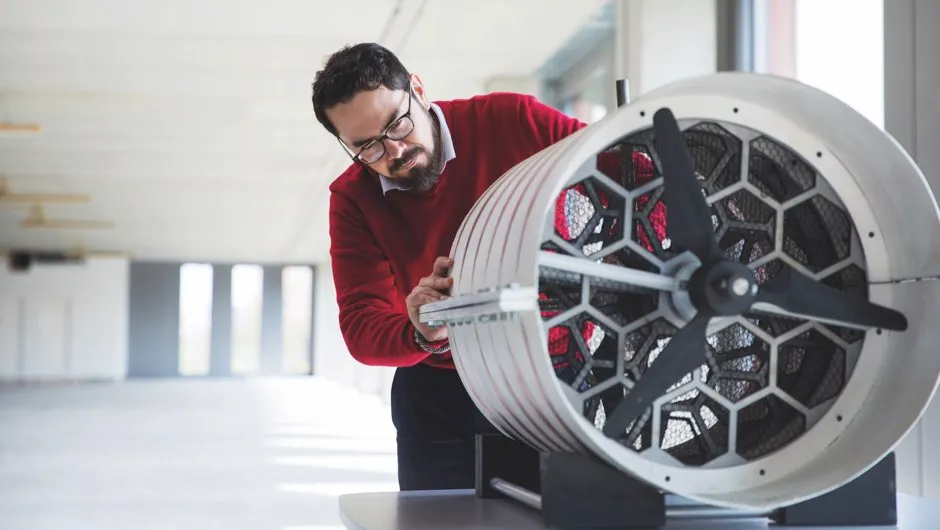
“Without data, it’s like fighting against a problem that we don’t understand,” says Inty Grønneberg, CEO of Ichthion. The recovered plastic, up to 80 tonnes a day, is then sorted and sent off for reuse and recycling.
The first Azure systems are due to be installed next year in rivers in Ecuador, where it’s hoped they will stem the flow of plastic heading towards the Galapagos Islands. Another device that the Ichthion team is working on will attach to ships and filter plastic particles from the water, an idea inspired by basking sharks that sieve plankton through their gills.
Breeding tougher reefs
Coral reefs are thriving ecosystems, with one-quarter of all marine species calling them home. But if average temperatures rise by 2°C by 2100, most of the world’s reefs will be destroyed. Breeding ‘super corals’ could be one way of saving them from the climate crisis.
In Australia, Prof Madeleine van Oppen is continuing the work she began a few years ago with coral biologist Ruth Gates, who died in 2018. She, and other teams of researchers, are trying different techniques that fall under the umbrella of ‘assisted evolution’, ranging from selective breeding to gene editing.

Some species of coral are naturally better able to cope with heat, and there are already promising results from cross-breeding these tougher corals with other species to produce heat-tolerant hybrids. Meanwhile, scientists are hunting for the genes that give some corals their heat tolerance. Ultimately, the aim could be to replant reefs with hardy, lab-grown corals.
Conservation scientist Dr Heather Koldewey, from the Zoological Society of London, warns that we don’t have time to conduct decades of research but urgently need to assess which solutions are most viable, so we’re ready to act. But until countries cut greenhouse gas emissions, “everything else we’re doing for coral reefs is just buying time,” she says.
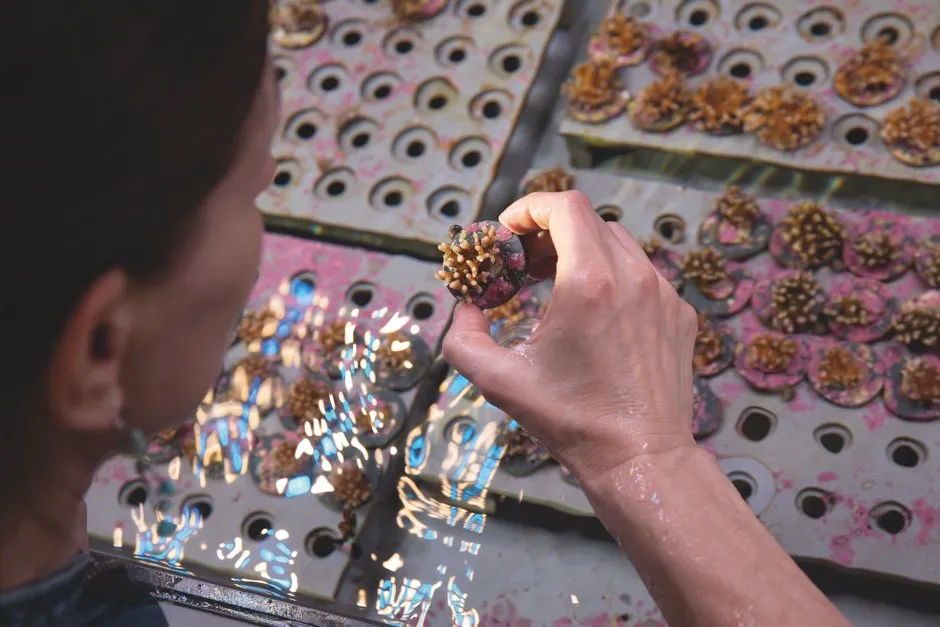
Shark eye in the sky
In Australia and South Africa, shark nets are often deployed in coastal regions to reduce the likelihood of shark attacks – not by putting a barrier between humans and sharks, but by deliberately killing thousands of sharks a year. The theory is that fewer sharks mean fewer attacks. However, as top predators, sharks are an important part of the ecosystem, and many species are already threatened. The nets can also trap other vulnerable marine life, including stingrays, dolphins and turtles.
Project Airship could provide a cost-effective, zero-impact alternative means of keeping bathers safe. Project Airship uses tethered blimps that are equipped with motion-sensitive cameras to keep an eye on coastal waters. According to founder Kye Adams, these blimps will keep going all day, as opposed to coastguard-driven drones that can only run for around 20 minutes.
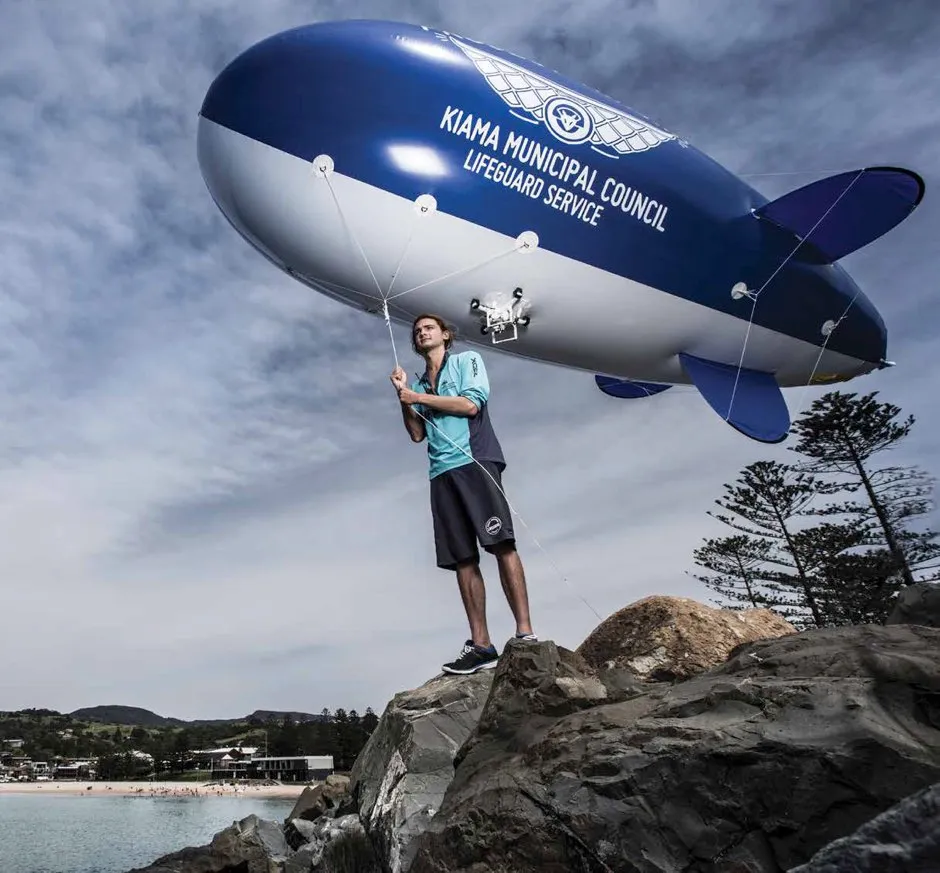
During two test seasons in Australia, Adams deployed ‘analogue sharks’, otherwise known as human freedivers, into the sea. He was pleasantly surprised by how well the camera detected the divers swimming underwater with their arms stuck out to imitate a shark’s pectoral fins. The next step will be to use artificial intelligence to automatically detect real sharks.
Ultimately, the airships could be an option to reassure swimmers and surfers that it’s safe to into the water, rather than killing sharks by launching culling campaigns and setting up shark nets.
Policing poachers from space
Until a few years ago, it was almost impossible to track illegal fishing activity that was taking place out in the open ocean. What happened beyond the horizon, stayed beyond the horizon.
Since 2016, the Global Fishing Watch has been keeping an eye on the oceans from space. The collaboration between internet giant Google, the conservation group Oceana and satellite technology experts SkyTruth, makes it much harder for vessels to hide what they’re up to.
The technology is based on the tracking devices that large boats must carry to broadcast their location, speed and course in order to avoid collisions with other vessels. The Global Fishing Watch team used this publicly-available information to teach computer algorithms what different types of fishing looks like. For example, long-lining boats work over and over straight stretches of water, while trawlers crawl around more haphazardly.
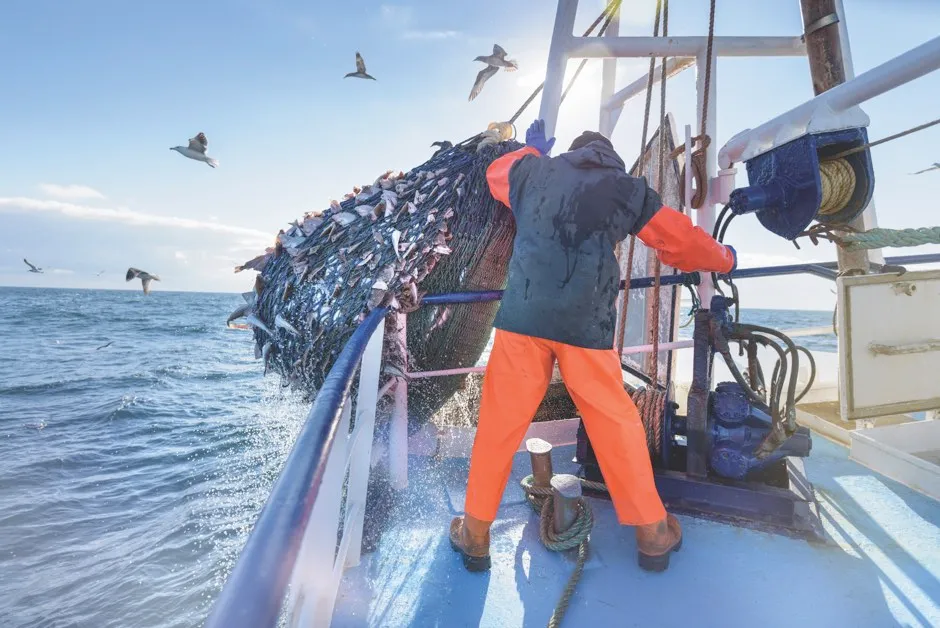
Now, the system analyses 60 million data points each day to identify the telltale fishing patterns of more than 65,000 vessels. The fishing activities are then posted in near real time on an interactive, online map that anyone can access and download.
Already, governments are using the data to combat illegal fishing inside marine reserves, while researchers are drawing up strategies for making legal fishing more sustainable.
The system can even identify fishing vessels that are trying to dupe the system. The algorithms detect when several vessels use the same identification number, or when someone tampers with the onboard GPS and the vessel’s broadcast location doesn’t match the whereabouts of the satellite that received the data.
Send in the robots!
The deep sea is the planet’s biggest habitat, but we still know so little about it. With emerging threats such as deep-sea mining, it has become increasingly urgent to study this habitat so we can find out what species live down there and what impact our actions will have.
The problem is, it’s incredibly difficult to explore the ocean depths, but technological innovations, including fleets of diving robots known as autonomous underwater vehicles or AUVs, are helping us make this a possibility. Equipped with high resolution cameras, AUVs are the powerful eyes that allow us to glimpse the environment beneath the surface. The only snag is that somebody has to pore through the footage afterwards.

“It’s astronomical how long it takes to analyse imagery,” says Prof Kerry Howell, a marine ecologist from Plymouth University. Howell leads the Deep Links project, which recently tested artificial intelligence as a way of speeding up the process.
Her team took a dataset of 150,000 images collected by one of the UK’s AUVs, called Autosub6000, from a dive it made to more than a kilometre deep on the Rockall Bank in the Atlantic Ocean. PhD student Nils Piechaud got the unenviable job of examining 1,200 of those images and identifying 40,000 animals from more than 100 species. Using those images, he then trained Google’s TensorFlow – a deep learning algorithm – to identify deep-sea animals.
The algorithm’s performance was then tested using other images it hadn’t already seen. “For some species, it does very well,” says Howell. Over 90 per cent of the time, the algorithm correctly spotted xenophyophores, organisms that look like croquet balls made of honeycomb.

It’s early days, but Howell is convinced that algorithms will assist researchers with mind-numbing tasks and help unlock the potential of autonomous technologies. “The brilliant thing about artificial intelligence and computer vision is that it’s consistent,” says Howell. Unlike humans, algorithms don’t get tired, or make unpredictable mistakes.
Of course, machines aren’t always right, but their bias can be quantified and removed from the data – something that’s impossible with the wandering minds of humans.
HOW OUR OCEANS CAN SAVE US
Drugs, food and oxygen... Here's what we stand to lose if we fail to protect our oceans.
An unopened medicine chest
Modern medicine is becoming threatened by antibiotic-resistant infections such as MRSA. With lifesaving drugs losing their efficacy, some experts warn of a return to the Dark Ages if this continues.
As a consequence, an urgent search is underway for new medicines to battle against resistance, and one place people are looking is in the oceans. “Sponges and corals are the most promising sources of natural products that have medical properties,” says Prof Howell, a marine ecologist from Plymouth University. That’s because these animals are commonly colonised by bacteria that have evolved chemicals to defeat and kill each other, making the ideal basis for antibiotic drugs.

As a deep-sea biologist, Howell is among the first to know about any new molecules discovered in the oceans. Howell and her colleague Mat Upton, a microbiologist also at Plymouth University, have already uncovered at least one molecule extracted from deep-sea bacteria that seems to be effective against MRSA.
Howell admits that she originally became interested in bioprospecting as a way of persuading people to care about deep-sea species. “If you don’t care about the deep sea just because it’s wrong to destroy species and habitats, then at least care about it because it might actually save your life,” she says.
It’s not only antibiotics that are being found in the oceans. Painkillers have been produced that are based on the toxins of deadly, tropical cone snails. Meanwhile, a Caribbean sponge has yielded various antiviral and anti-cancer drugs, including cytarabine to treat lymphoma and leukaemia, and aciclovir used against shingles, chickenpox, cold sores and herpes.
Oceans that soak up heat and CO2
Without the oceans, the climate crisis would already be far worse. This huge volume of water has absorbed more than 90 per cent of the heat from the warming atmosphere, and soaked up many gigatonnes of carbon dioxide (one gigatonne = a billion tonnes).
A recent study calculated that between 1994 and 2007, the oceans absorbed close to one-third of all the CO2 emitted by human activities. “The oceans have shielded us from the heat, they’ve shielded us from the carbon dioxide,” says Dan Laffoley, from the International Union for the Conservation of Nature. “If the ocean hadn’t been there, global surface temperatures would be over 30°C warmer.”
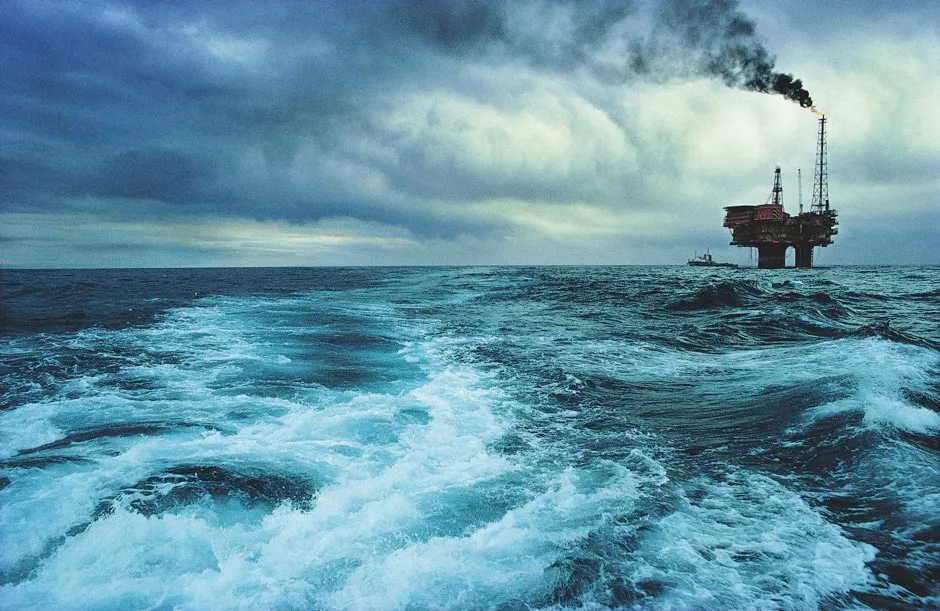
He describes the oceans as a comfort blanket that has been keeping conditions just right for life on Earth. But while their colossal absorption of carbon and heat helps to stave off the climate crisis, it causes other problems beneath the waves. The oceans themselves are noticeably warming and are becoming more acidic, and as temperatures rise the oceans are losing oxygen.
And this spells bad news for all sea life, which will find it harder to breathe and survive. The shifting chemistry of the oceans makes life especially tough for corals, clams, plankton and other organisms with shells or skeletons made of calcium carbonate which begins to dissolve as pH drops.
The lungs of the planet
We should all be thankful for the existence of phytoplankton. Multitudes of these tiny organisms float through the oceans, harnessing energy from the Sun via photosynthesis, and in the process producing roughly half of all the oxygen in Earth’s atmosphere (the rest comes from land plants).
Especially important is a type of cyanobacteria, or blue-green algae, called Prochlorococcus. What they lack in size – 10 of them could fit across the width of a red blood cell – they more than make up for in numbers, and are probably the most abundant photosynthetic organisms on the planet.
Read more about the ocean's most unusual sea creatures:
- 39 stunning photos from the Underwater Photographer of the Year 2019 competition
- What creature makes the biggest seashell?
- Long-lived clams reveal secrets of oceans past
“They exist in such numbers that they’re measured in octillions, which I think is 1027, a ridiculously massive number,” says Laffoley.
Prochlorococcus specimens were first isolated from water collected from the Sargasso Sea in 1986, by oceanographer Sallie Chisholm from the Massachusetts Institute of Technology. This year, she was awarded the $750,000 Crafoord Prize for her ground-breaking discovery and ongoing study of the vitally important cyanobacteria
The tech inspired by sea creatures
Many scientists and engineers have been inspired to develop useful new materials, structures and technologies based on the things that live in the oceans. For example, instead of clunky, metal robots, we could one day see soft-bodied machines inspired by the flexible arms of octopuses. Octopuses’ amazing ability to change the colour and texture of their skin to instantly match their surroundings is also being investigated for use as military camouflage.
Inspiration from the oceans can come from the humblest animals. For example, researchers wanted to know how mussels stay attached to rocks, even when they are wet and being pounded by waves. It turns out that the molluscs secrete a special type of waterproof glue, which medical researchers are now using to develop surgical adhesives to use in intricate procedures, such as operating on unborn babies.

A relative of mussels – the limpets – posed another question that was only recently answered: how do these common shoreline molluscs spend so much time scraping algae from rocks without smashing their teeth? Their secret lies in the intricate nanostructure of their gnashers, which makes them the toughest known biological material. If a limpet wanted to, it could chew its way through a bulletproof vest. Their tiny, resilient teeth could be replicated and used to our advantage for manufacturing tough materials.
Sea urchins take the concept of impressive dentistry a step further with their self-sharpening teeth. Their teeth are made of layers of calcium carbonate crystals and organic material with specific weak points that snap, leaving a razor-sharp edge. If materials scientists can mimic that ability, we could find ourselves using urchin-inspired, self-sharpening scissors and knives.
An irreplaceable source of food
According to the World Wide Fund for Nature (WWF), approximately 3 billion people rely on seafood as their number one source of protein. Just under half of the fish we eat comes from wild animals caught in the oceans, with the rest coming from fish farms.
Besides the familiar fish and shellfish, the oceans provide something else that reaches into our diets and daily lives, often without us knowing it. Each year, at least 25 million tonnes of seaweed are farmed. Sometimes you’ll see it as the nori wrapped around your sushi rolls, but a lot of it is used to make industrial products, including alginates and carrageenans, which end up in all sorts of items. Shampoo, toothpaste, pet food, ice cream, processed meats, vegetarian hot dogs, beer, shoe polish, air fresheners and fire extinguishers can all contain chemicals derived from seaweed.

Seaweed farming has traditionally been carried out in Asia, and now other countries including the UK and US are catching onto the benefits. Not only is seaweed considered a ‘superfood’ that’s rich in iodine, calcium and amino acids, but it can be sustainably farmed and is carbon-neutral, absorbing carbon dioxide and mopping up excess nutrients from the sea. Seaweed can be used to create biofuels, while research suggests that cattle reared on seaweed-based feeds produce less methane, a potent greenhouse gas.
It’s time for action
Given everything they provide and all the ways they make planet Earth habitable, it’s crystal clear that the oceans urgently need safeguarding. Establishing marine reserves where all damaging activities are off limits – particularly fishing – is a major win-win for the oceans and for us: ecosystems become healthier and potentially more resilient to climate change, while fishing is boosted by the eggs and larvae of species that spill out from these thriving oases.
Currently, around 8 per cent of the world’s ocean area has some level of protection inside marine reserves, although many are considered to be good on paper, but not well-enforced.
The European Commission claims that 10.8 per cent of European seas are protected, but a recent World Wide Fund For Nature (WWF) report concluded that properly managed reserves only cover 1.8 per cent.
Listen to episodes of the Science Focus Podcast about the sea:
- Why is the magnetic north pole moving? – Ciaran Beggan
- There is no Plan B for planet Earth – Lord Martin Rees
- How can we save our planet? – Sir David Attenborough
A global target to protect 10 per cent of the oceans by 2020 looks to be within reach, but conservationists and scientists are demanding more. In 2016, members of the International Union for the Conservation of Nature (IUCN), including 1,400 governments, NGOs and indigenous communities, voted overwhelmingly in support of a new target: protect 30 per cent of the oceans by 2030. This will help support fisheries, encourage biodiversity and safeguard traditions linked to the oceans.
“There’s no scientific publication that supports the current policy of protecting 10 per cent,” says the IUCN’s Dan Laffoley. Science is telling us that the minimum needed is one-third protection of the oceans, or more. And it’s not just about marine reserves but also what happens outside them. “If we are to have a sustainable ocean,” says Dr Heather Koldewey, a senior advisor at the Zoological Society of London. “It has to be a combination of protection combined with sustainable management of the rest.”
Update: A previous version of this article said that the oceans have become 300 per cent more acidic since pre-industrial times. This should have said 30 per cent. Also, oceanic plankton produces around 50 per cent of the Earth’s oxygen, not up to 85 per cent.